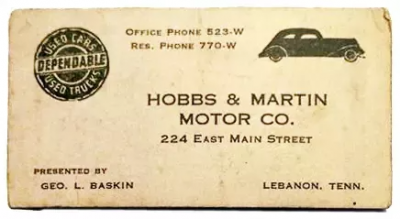Crafting the Perfect Visiting Card for Your Boutique Business
Crafting the Perfect Visiting Card for Your Boutique Business
In today's competitive world of fashion and retail, making a lasting impression is essential for boutique businesses. While a strong online presence is important, tangible elements like a visiting card continue to be invaluable tools for building and nurturing customer relationships. This blog explores the significance of a boutique business's visiting card, and the strategies and design elements that can help you create the perfect visiting card to enhance your boutique marketing.
The Power of the Visiting Card in Boutique Marketing
In the fast-paced fashion and retail industry, where trends change overnight, creating a strong brand identity and making a memorable impact is vital. The visiting card, often the first point of physical contact with your brand, plays a crucial role. Here's why it's so significant:
- First Impressions: Your visiting card is frequently the first physical interaction potential customers have with your boutique, shaping their initial perception of your brand.
- Professionalism: A well-designed card conveys professionalism and instils confidence in the quality of products and services that your boutique offers.
- Memorability: A memorable and well-crafted card is more likely to be kept by customers, helping them remember and revisit your boutique.
- Brand Identity: It serves as an extension of your boutique's brand identity, representing your unique style, values, and commitment to excellence.
- Contact Information: It provides a convenient way for potential customers to reach out to your boutique, allowing for easy communication.
Now, let's delve into the techniques and advice for creating the perfect visiting card for your boutique business.
- High-Quality Imagery
In the fashion world, imagery is key. Your visiting card should feature high-quality images that represent your boutique's style, products, or collections.
Technique: Select a range of high-resolution images showcasing your boutique's offerings. This can include images of clothing, accessories, or any specific collections that define your brand.
Advice: Regularly update the images on your visiting card to reflect the latest arrivals or seasonal collections. Ensure the images are consistent with your boutique's style and visual identity.
- Brand Logo and Identity
Your boutique's brand identity, including the logo, is the cornerstone of your marketing strategy. Your visiting card should seamlessly integrate these elements.
Technique: Incorporate your boutique's logo and brand colours into the card's design. Ensure that the logo placement enhances the overall aesthetic without overwhelming the design.
Advice: Consistency is key. The design elements on your visiting card should align with your boutique's branding across all marketing materials.
- Typography and Font Selection
The choice of fonts and typography is fundamental to creating a visually appealing visiting card that complements your boutique's style.
Technique: Select fonts that resonate with your brand identity. For example, use elegant and flowing scripts for a high-end, luxury boutique, or clean and modern sans-serif fonts for a contemporary boutique.
Advice: The text on your card should be clear and legible, ensuring that it effectively communicates essential information about your boutique. Maintain font consistency across all branding materials.
- Contact Information
Your visiting card should provide convenient contact information, making it easy for customers to reach out to your boutique.
Technique: Include your boutique's name, physical address (if applicable), phone number, email address, website, and social media profiles (if relevant).
Advice: Ensure that all contact information is accurate and up-to-date. It's crucial to regularly check and update your contact details.
- Finish and Texture
The tactile experience of your visiting card is important. The right finish and texture can elevate the perception of your boutique.
Technique: Experiment with different card stock finishes and textures, such as matte, glossy, or textured paper. Choose a finish that aligns with your boutique's style.
Advice: The finish should enhance the overall design without detracting from the visuals. Consider the texture and thickness of the card stock to convey a particular quality or style.
- Color Palette
Colors play a significant role in conveying the mood, style, and identity of your boutique. The color palette on your visiting card should be consistent with your brand's visual identity.
Technique: Choose colors that resonate with your boutique's style and brand. For instance, use a soft pastel palette for a romantic boutique, or bold and vibrant colors for a trendy, urban boutique.
Advice: Consistency in the color palette across your branding materials, from the visiting card to your website and in-store displays, helps reinforce your brand identity.
- Visual Placement and Size
The placement and size of visuals, such as images and logos, are crucial in creating an effective visiting card.
Technique: Arrange visuals in a balanced and aesthetically pleasing manner. Ensure that the placement of images, logos, and text creates a visual hierarchy that guides the reader's eye.
Advice: Maintain a clean and uncluttered design. Visuals should be appropriately sized, with your boutique's logo serving as a focal point, and images accentuating your brand identity.
- Aesthetic Details and Embellishments
Small aesthetic details can add an extra touch of sophistication to your visiting card.
Technique: Experiment with subtle embellishments like foiling, embossing, or debossing to add a tactile element to your card.
Advice: These details should enhance the design without overshadowing other elements. The choice of embellishments should align with your boutique's style and message.
- QR Codes and Digital Engagement
Incorporating QR codes on your visiting card can provide an interactive element that leads customers to your boutique's online platforms.
Technique: Include QR codes that link to your boutique's website, social media profiles, or exclusive online offers. This allows customers to seamlessly access additional information and engage with your brand digitally.
Advice: Ensure that the QR codes are scannable and lead to relevant, up-to-date content. QR codes can also serve as a tracking tool to monitor customer engagement.
- Call to Action
A well-designed visiting card should encourage potential customers to take action













